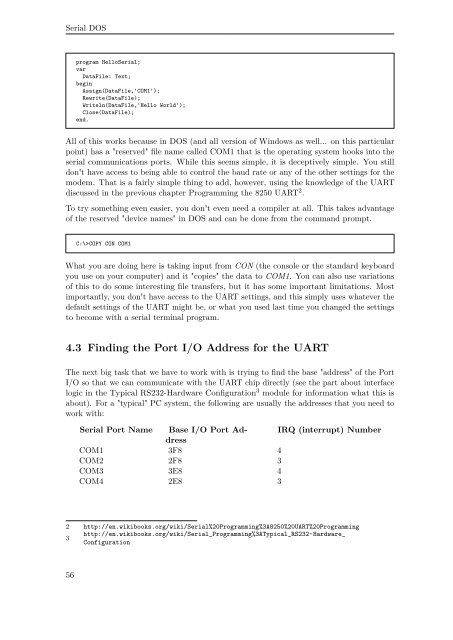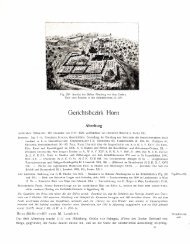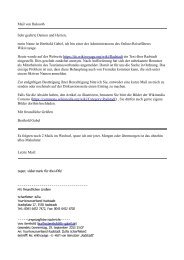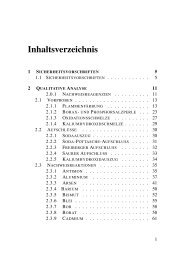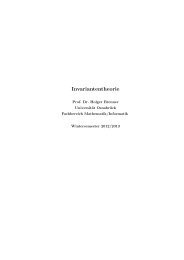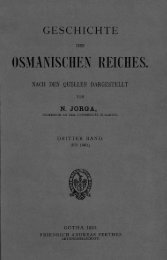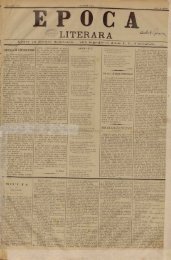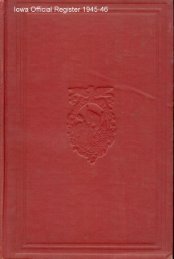Serial Programming - upload.wikimedia....
Serial Programming - upload.wikimedia....
Serial Programming - upload.wikimedia....
You also want an ePaper? Increase the reach of your titles
YUMPU automatically turns print PDFs into web optimized ePapers that Google loves.
<strong>Serial</strong> DOS<br />
program Hello<strong>Serial</strong>;<br />
var<br />
DataFile: Text;<br />
begin<br />
Assign(DataFile,'COM1');<br />
Rewrite(DataFile);<br />
Writeln(DataFile,'Hello World');<br />
Close(DataFile);<br />
end.<br />
All of this works because in DOS (and all version of Windows as well... on this particular<br />
point) has a "reserved" file name called COM1 that is the operating system hooks into the<br />
serial communications ports. While this seems simple, it is deceptively simple. You still<br />
don't have access to being able to control the baud rate or any of the other settings for the<br />
modem. That is a fairly simple thing to add, however, using the knowledge of the UART<br />
discussed in the previous chapter <strong>Programming</strong> the 8250 UART 2 .<br />
To try something even easier, you don't even need a compiler at all. This takes advantage<br />
of the reserved "device names" in DOS and can be done from the command prompt.<br />
C:\>COPY CON COM1<br />
What you are doing here is taking input from CON (the console or the standard keyboard<br />
you use on your computer) and it "copies" the data to COM1. You can also use variations<br />
of this to do some interesting file transfers, but it has some important limitations. Most<br />
importantly, you don't have access to the UART settings, and this simply uses whatever the<br />
default settings of the UART might be, or what you used last time you changed the settings<br />
to become with a serial terminal program.<br />
4.3 Finding the Port I/O Address for the UART<br />
The next big task that we have to work with is trying to find the base "address" of the Port<br />
I/O so that we can communicate with the UART chip directly (see the part about interface<br />
logic in the Typical RS232-Hardware Configuration 3 module for information what this is<br />
about). For a "typical" PC system, the following are usually the addresses that you need to<br />
work with:<br />
<strong>Serial</strong> Port Name Base I/O Port Address<br />
IRQ (interrupt) Number<br />
COM1 3F8 4<br />
COM2 2F8 3<br />
COM3 3E8 4<br />
COM4 2E8 3<br />
2 http://en.wikibooks.org/wiki/<strong>Serial</strong>%20<strong>Programming</strong>%3A8250%20UART%20<strong>Programming</strong><br />
http://en.wikibooks.org/wiki/<strong>Serial</strong>_<strong>Programming</strong>%3ATypical_RS232-Hardware_<br />
3<br />
Configuration<br />
56


